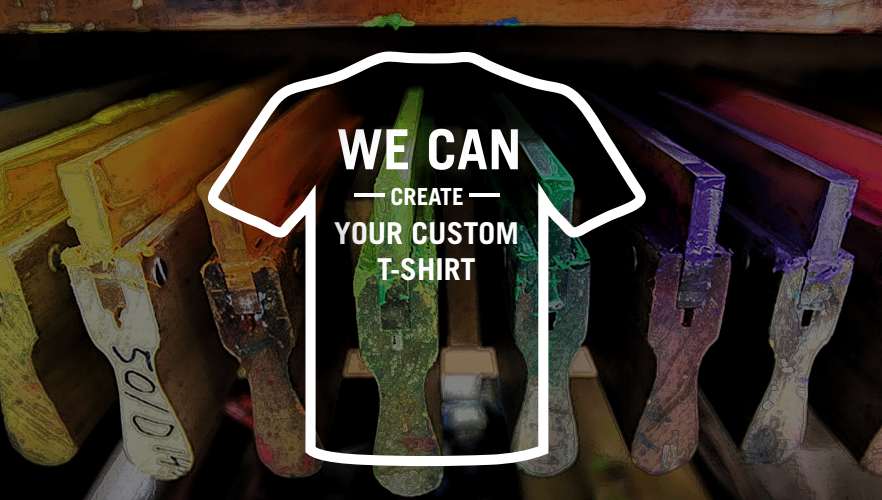Grasping Silk Display Printing: Advice for Creating Stunning Designs
If you're looking to grasp silk display printing, you'll need even more than just interest. By the end, you'll be ready to create magnificent designs that show your distinct design.
Recognizing the Fundamentals of Silk Display Printing
Silk display printing, commonly called display printing, is a flexible approach for moving layouts onto various products. You'll find it's perfect for publishing on fabrics, paper, plastic, and more. The process involves creating a stencil, or display, that permits ink to pass via just in details areas, generating clean and dynamic styles.
To begin, you'll need to prepare your art work, guaranteeing it's in a suitable layout. screen printing kit. As soon as you have actually obtained your design ready, you'll coat your screen with a light-sensitive emulsion and reveal it to light. This step develops a pattern of your style on the screen
After rinsing the unexposed solution, you're readied to publish. Align your screen over your material, apply ink, and use a squeegee to push the ink through the display. It's everything about technique and patience, so don't hesitate to experiment and refine your method as you go.
Essential Devices and Materials You'll Need
To start with silk display printing, you'll need a few fundamental supplies like screens, squeegees, and ink. As soon as you fit, you can explore sophisticated equipment that improves your printing quality and efficiency. Allow's discuss what you'll call for to guarantee your projects succeed from the beginning.
Standard Silk Display Products
Beginning on a silk screen printing job needs a few important tools and products to ensure your success. You'll require a silk screen structure, which holds the mesh that transfers your style. A squeegee is crucial for pushing ink with the screen onto your substrate. Do not fail to remember the ink itself; pick colors that suit your design and the product you're publishing on. A source of light is vital for exposing your display, in addition to emulsion to develop your pattern. You'll additionally require an appropriate work area, ideally one that's complimentary and well-lit from dirt. Lastly, stockpile on cleansing supplies to maintain your tools and maintain your displays in excellent problem. With these fundamentals, you prepare to dive into your project!
Advanced Printing Tools
When you prepare to take your silk display printing to the following level, investing in sophisticated printing devices can make a substantial difference. A top quality screen printing machine is crucial; seek a multi-color press that allows for specific registration and quicker production. You'll additionally wish to update to a more efficient direct exposure system to guarantee your styles are vibrant and sharp.
Take into consideration purchasing a trusted warmth source, like a conveyor dryer, for even healing of inks. Don't forget specialized inks; water-based and discharge inks provide exceptional outcomes on various textiles. Finally, a great set of mops and emulsion scoop coater will improve your procedure, giving your designs that professional side.
Preparing Your Artwork for Printing
Preparing your art work for silk display printing is crucial to accomplishing vibrant, professional outcomes. Start by verifying your style is in the appropriate format-- vector files like.AI or.EPS work best. In this manner, your artwork preserves top quality at any size. Next off, examine the shade setting; usage CMYK for accurate shade depiction.
Once your data prepares, develop a separate layer for every shade in your design. This'll make it easier throughout the printing procedure. Do not neglect to add enrollment marks to straighten colors effectively.
Additionally, consider the mesh count of your display; finer information may require a greater mesh count. Conserve your art work with a resolution of at least 300 DPI to assure crisp prints. By complying with these steps, you'll establish yourself up for an effective printing experience and bring your styles to life magnificently.
The Screen Printing Process: Step-by-Step
Since you have actually prepared your artwork, it's time to concentrate on the screen printing process itself. You'll start by preparing your screen, ensuring it's ready for the ink application. From there, you'll explore numerous printing strategies to attain the very best outcomes for your task.
Preparing Your Display
Obtaining your screen ready is a crucial step in the silk screen printing procedure. Clean the screen extensively to eliminate any kind of deposit, dirt, or oil. Make use of a degreaser and rinse it well to guarantee a smooth surface area for your solution. Next, use a light coat of solution evenly throughout the screen utilizing an inside story coater. Ensure to do this in a dimly lit location to prevent premature direct exposure. Allow the solution to completely dry completely prior to exposing it to your style. Once completely dry, put your openness on the screen and make use of a light source to subject the design. After direct exposure, wash out the unexposed emulsion, and you'll have your display planned for printing.
Printing Techniques Clarified
As soon as your screen is prepared, you can dive into the exciting process of printing. First, location your display on your substratum-- whether it's material, paper, or an additional product. Secure it to prevent any kind of motion. Next, pour your ink onto one side of the screen and utilize a squeegee to draw the ink across the layout. Apply even pressure to guarantee the ink permeates through the mesh. Raise the display very carefully to disclose your print. If you're layering shades, allow each layer completely dry prior to using the following. Clean your screen promptly to avoid ink from clogging the mesh and drying out. With method, you'll master the subtleties of stress and timing, which will help you attain crisp, lively designs.
Tips for Getting Vibrant Color Styles
While attaining dynamic shades in silk screen printing may appear tough, you can quickly raise your styles with a couple of essential techniques. Select high-grade inks especially made for silk display printing; they offer better coloring and coverage. Blending inks correctly can likewise improve vibrancy-- try out proportions to discover the perfect blend that stands out.

Last but not least, do not forget healing your prints appropriately. Correct warmth establishing warranties the shades bond with the textile, preserving their vibrancy gradually. By applying these strategies, you'll develop magnificent, eye-catching layouts that absolutely radiate.
Fixing Usual Printing Problems
Despite dynamic colors in your layouts, silk screen printing can in some cases present obstacles. One usual problem is ink bleeding, which often takes place when you make use of way too much ink or don't let the previous layer completely dry completely. To avoid this, use a squeegee with simply the ideal stress and guarantee each layer is dry before adding extra.
An additional problem is imbalance. Confirm your registration marks and make changes to your screens if your style isn't lining up effectively. Additionally, if you notice a lack of information, it might be due to a clogged screen. Clean your displays extensively prior to beginning your print run.
Lastly, if the ink isn't adhering well to the fabric, consider the fabric kind and the treating process. Make certain you're using the right ink and that you're treating it at the suitable temperature level. Troubleshooting these common issues will help you attain spectacular results.
Experimenting With Strategies and Effects
Experimenting with different techniques and impacts can boost your silk screen printing jobs to new elevations. You can also play with structures-- using different squeegee techniques or incorporating materials like brushes or sponges includes measurement to your prints.
Take into consideration making use of specialized inks, such as metal or glow-in-the-dark, to provide your styles an unforeseen twist. You may even check out stenciling, where you can reduce detailed layouts for spectacular impacts.
Do not forget substrate variants! Printing on textiles, wood, or paper can generate different outcomes that boost your project's feeling.
Ultimately, keep a journal of your experiments. Recording your successes and failings will lead your future creations and aid you fine-tune your style. Embrace the procedure, and take pleasure in the journey of discovering what jobs best for you!
Often Asked Questions
Just how Do I Tidy and Preserve My Screen Printing Equipment?
To clean up and preserve your screen printing devices, on a regular basis scrub displays with an ideal cleaner, laundry squeegees after use, and store everything in a completely dry, dust-free atmosphere. Keeping things clean assurances much better prints and longer-lasting tools.

Can I Print on Products Aside From Material?
Yes, you can publish on products various other than textile! Consider making use of paper, wood, or plastic. Simply make sure your inks and screens are compatible with those surface areas for the finest results. Experiment and have enjoyable!
What Is the very best Method to Store Screens and Inks?
To keep inks and displays efficiently, keep screens upright in a great, completely dry area, and cover them to avoid dirt. Shop inks in airtight containers, far from straight sunshine, to keep their top quality and uniformity.
Just how Do I Choose the Right Mesh Count for My Project?
Picking the right mesh count depends on your layout's detail and ink type. For vibrant layouts, a lower count, around 110, works best.
What Are the Ecological Influences of Silk Display Printing?
Silk screen printing can have environmental effects, like chemical waste and water use. You can lessen these by using eco-friendly inks, reusing products, and correctly disposing of chemicals to reduce your project's environmental footprint.
Silk screen printing, typically called screen printing, is a versatile method for transferring designs onto various products. Straighten your screen over your material, apply ink, and use a squeegee to press the ink via the screen.To get started with silk display printing, you'll need a few standard materials like garment printing screens, squeegees, and ink.When you're all set to take your silk screen printing to the next level, investing in advanced printing devices can make a significant difference.Getting your screen all set is an important action in the silk screen printing procedure.
Comments on “Beginner-Friendly Screen Printing Kit for DIY Projects”